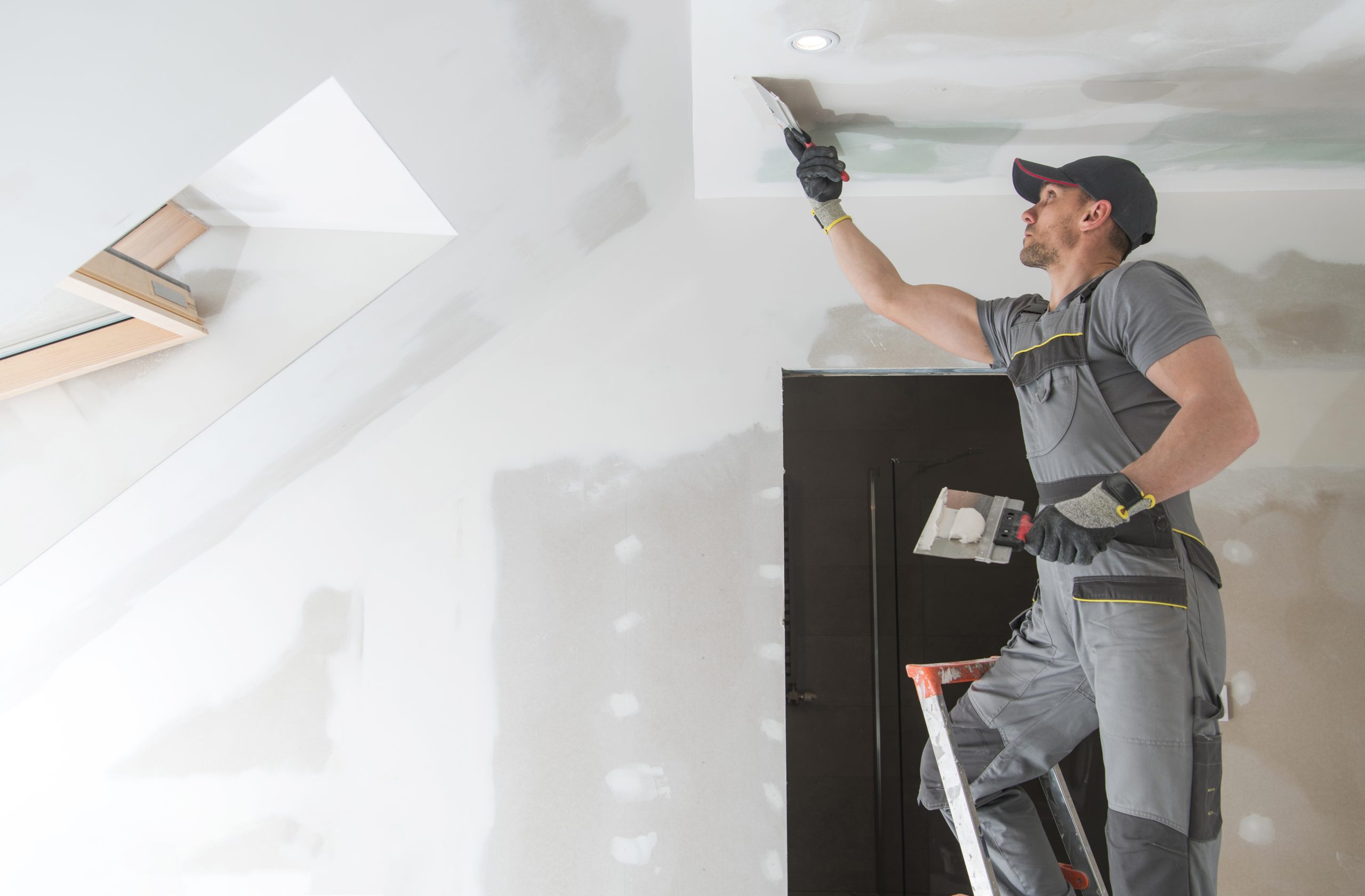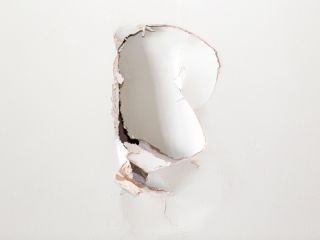Important Tips for Effective Drywall Fixing and Installation Techniques
Effective drywall repair work and installment needs a careful technique. Understanding the sorts of drywall and having the right tools is crucial. Proper techniques and exact dimensions can substantially impact the end result. Lots of forget important actions like taping and sanding, which can make or break the last appearance. As tasks proceed, usual challenges might occur that require focus. Discovering these suggestions can lead to an extra effective and sleek finish.
Recognizing Various Kinds Of Drywall
Comprehending the different types of drywall is important for any kind of successful repair or setup task. Drywall, typically called gypsum board, comes in several selections customized for particular applications. Criterion drywall is the most extensively utilized kind, suitable for general indoor wall surfaces and ceilings. Moisture-resistant drywall, usually green in color, is made for areas susceptible to humidity, such as kitchen areas and bathrooms. Fire-resistant drywall, usually colored pink or purple, is engineered to hold up against higher temperatures and is commonly utilized in garages or near heating systems. Furthermore, soundproof drywall aids minimize sound transmission, making it appropriate for multi-family homes or tape-recording workshops. Specialty drywall, like concrete board, is utilized in damp areas like showers or bathtub borders. Understanding these types aids in selecting the ideal product for each and every project, making certain longevity and effectiveness out of commission or brand-new installations.
Important Devices for Drywall Repair Work and Setup
Having the right devices is important for reliable drywall repair and installation. A high quality utility knife is vital for reducing drywall sheets precisely. A drywall T-square helps assure straight edges, while a taping blade is necessary for using joint compound smoothly over joints. Additionally, a drywall saw allows for reducing out harmed sections or suitable drywall around fixtures.
For hanging drywall, a power drill with drywall screws is essential, as it enables secure and fast installment. A level is additionally crucial to validate that the drywall is straight and appropriately aligned. A fining sand block or pole sander is important for raveling joint compound once it has actually dried out. A gauging tape is important for accurate dimensions, avoiding waste and making certain an appropriate fit. Furnished with these tools, people can tackle drywall tasks effectively, resulting in professional-looking outcomes.
Step-by-Step Overview to Fixing Holes and Cracks
When dealing with openings and splits in drywall, having the right tools and materials is essential for an effective repair work. This guide outlines the necessary things and provides a clear, step-by-step procedure to properly restore the surface area. Understanding these aspects will assist guarantee a seamless finish and resilient results.
Tools and Materials Needed
A well-equipped toolkit is crucial for reliable drywall fixing and installation. Secret devices consist of an energy blade for cutting drywall, a measuring tape to ensure exact sizing, and a drywall saw for bigger holes. A putty knife is important for applying joint compound efficiently, while a fining sand block or post sander helps accomplish a smooth finish. For patching, a roll of fiberglass mesh tape or paper tape is needed to strengthen joints. In addition, a drill and screws are needed for securing brand-new drywall items. Crucial products consist of joint compound, guide, and paint to complete the repair service. Having these devices and products handy assures a smoother, a lot more reliable repair work procedure, producing professional-looking outcomes.
Fixing Process Actions
Fixing openings and fractures in drywall requires a systematic approach to assure a seamless finish. First, the area bordering the damage ought to be cleaned up completely to get rid of dust and debris. Next, for little fractures, a putty blade is used to use a joint compound equally over the area. For bigger openings, a patch is required; the harmed section is eliminated, and a brand-new item of drywall is suited area, safeguarded with screws. When the spot is in setting, joint substance is put on mix the edges. After drying out, sanding the area smooth is vital. Lastly, the fixed surface should be keyed and painted to match the bordering wall surface, making sure an inconspicuous fixing.
Strategies for Putting Up Drywall Panels
Setting up drywall panels needs careful planning and specific execution to guarantee a smooth and professional finish. Initially, it is vital to measure the wall surface room precisely and cut the panels to fit, making sure that they line up with the studs. Positioning the panels flat is commonly advised, as this can improve the structural honesty look at here and reduce the number of seams.
Utilizing drywall screws, installers must protect the panels every 16 inches along the studs, guaranteeing a company hold. It is important to avoid overdriving the screws, which can harm the paper surface. For edges and edges, utilizing an energy blade permits tidy cuts and a snug fit.

Completing Touches: Insulation, Mudding, and Fining sand
Once the drywall panels are firmly in position, the following important action entails the finishing touches of taping, mudding, and sanding. Insulation is necessary for creating a smooth shift in between panels and concealing joints. A high quality drywall click here for info tape, either paper or fiberglass fit together, should be applied over the joints, guaranteeing it sticks appropriately to the mud that will certainly be used next.
Mudding, or applying joint substance, complies with the taping process. This substance fills gaps and ravel the surface. An initial layer needs to be applied kindly, feathering the sides to mix with the drywall. After the preliminary coat dries, succeeding layers may be required for a perfect finish.
Finally, fining sand is essential to attain a smooth surface area. A fine-grit sandpaper ought to be used to delicately smooth out any type of flaws. Treatment needs to be required to prevent over-sanding, which can harm the drywall - Drywall Repair Ogden UT. Effectively carried out, these ending up touches develop an expert appearance all set for paint
Tips for Keeping Your Drywall After Installment
Keeping drywall after setup is vital More Bonuses to maintaining its look and structural honesty. Routine cleansing is necessary; dust and dust can build up, so gentle wiping with a moist towel is advised. Homeowners ought to also check for any indications of wetness or mold, especially in high-humidity locations like bathrooms and kitchens. If any type of damage happens, it's essential to resolve it immediately to protect against further issues.
Using furniture pads can assist avoid scrapes or damages from hefty products. In addition, repainting the drywall with a premium, washable paint provides an extra layer of defense and makes future cleaning less complicated. Prevent utilizing rough cleaners or devices, as these can damage the surface. Ultimately, preserving a stable interior environment with suitable moisture degrees will certainly aid avoid splitting or contorting gradually. By following these ideas, one can guarantee that drywall remains in outstanding condition for many years to come.
Often Asked Questions
How Much Time Does Drywall Take to Fully Dry After Installation?

Can I Mount Drywall Over Existing Drywall?
Yes, drywall can be set up over existing drywall, however it is vital to assure the underlying surface is secure and adequately prepared. This method can enhance insulation and lower setup time, though it might include weight.
What Is the most effective Way to Soundproof Drywall?
The finest means to soundproof drywall entails making use of specialized soundproofing materials, such as durable channels, acoustic caulk, and sound-dampening drywall. These strategies effectively minimize sound transmission in between areas, improving general acoustic efficiency in living rooms.
How Do I Select the Right Drywall Thickness?
To choose the best drywall thickness, consider the application and area. Criterion residential wall surfaces usually make use of 1/2 inch, while ceilings or specialized locations might need 5/8 inch for added strength and soundproofing capacities.
Are There Eco-Friendly Drywall Options Available?
Yes, eco-friendly drywall options are offered. These consist of products made from recycled materials, gypsum boards with low unpredictable natural compounds (VOCs), and those utilizing sustainable production processes, using environmentally-conscious options for building and restoration jobs.
Having the right tools is crucial for efficient drywall repair and installation. For hanging drywall, a power drill with drywall screws is essential, as it enables secure and fast installation. Trick devices consist of an utility blade for reducing drywall, a tape step to guarantee exact sizing, and a drywall saw for bigger holes. Yes, drywall can be installed over existing drywall, yet it is necessary to ensure the underlying surface area is safe and properly prepared. The finest method to soundproof drywall entails using specialized soundproofing materials, such as resistant networks, acoustic caulk, and sound-dampening drywall.